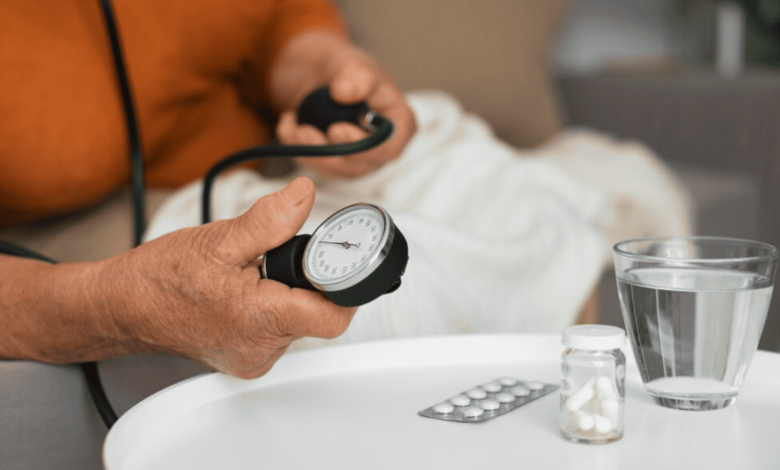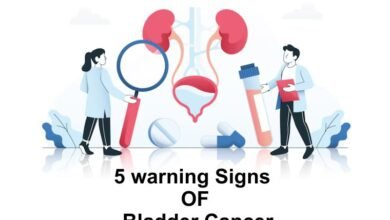
Your skin, the body’s largest organ, is a reflection of your overall health. Many of us tend to overlook the way our skin changes or reacts to certain conditions, yet these alterations can offer valuable insights into deeper health concerns. Skin rashes and high blood pressure are two common conditions that can leave visible marks on your skin. In this article, we will explore how changes in your skin can signal potential health issues such as high blood pressure and skin rashes. Recognizing these symptoms early on can help in preventing serious complications, so it’s essential to stay informed.
Understanding the Link Between Skin and Health
The skin serves as a barrier between the internal and external environments of the body. It protects your organs from pathogens, regulates temperature, and even helps synthesize vitamin D. However, when something goes wrong inside the body, your skin often shows the first signs of distress. Whether it’s a rash or other changes in texture, color, or appearance, the condition of your skin can provide crucial clues about your health. This is particularly true for conditions like high blood pressure, which may not be noticeable at first but can have far-reaching effects on your body, including your skin.
High Blood Pressure: The Silent Threat
High blood pressure, also known as hypertension, is one of the most prevalent and dangerous health conditions globally. It’s often referred to as a “silent killer” because it rarely presents obvious symptoms until it has caused significant damage. Left unchecked, high blood pressure can lead to severe complications such as heart disease, stroke, kidney failure, and even vision loss.
But did you know that high blood pressure can also manifest in your skin? Though not as commonly recognized as other symptoms like headaches or dizziness, changes in your skin may be one of the subtle signs of hypertension. Let’s take a closer look at how skin can reveal high blood pressure.
Skin Rash and High Blood Pressure: A Possible Connection
One of the ways high blood pressure can affect your skin is by causing skin rashes. It is not uncommon for people with hypertension to experience rashes, which may appear as red, inflamed patches or blotches. These rashes can often be linked to the increased strain high blood pressure places on the blood vessels, which leads to issues like poor circulation or inflammation. The skin, in turn, may react by developing a rash or unusual patches.
Moreover, certain medications used to treat high blood pressure can also contribute to skin rashes. Drugs like beta-blockers or ACE inhibitors are often prescribed to lower blood pressure, but they can cause allergic reactions or side effects that manifest as rashes. These rashes may appear shortly after starting the medication, indicating a potential allergic reaction to the drug.
While a skin rash and high blood pressure may seem unrelated, the connection between them is significant enough to warrant attention. If you experience persistent rashes and have been diagnosed with hypertension, it’s important to consult your healthcare provider to rule out any medication side effects or other underlying health issues.
How High Blood Pressure Impacts the Skin
High blood pressure can affect the skin in various ways, even beyond the appearance of rashes. Here are some of the common skin changes that may occur as a result of hypertension:
1. Poor Circulation and Dry Skin
Chronic high blood pressure can lead to narrowed blood vessels, reducing blood flow to the skin and other organs. This decrease in circulation can result in dry, flaky skin, especially on the legs and arms. Poor circulation means that your skin isn’t getting the oxygen and nutrients it needs to stay healthy, which can lead to dryness, irritation, and premature aging.
2. Skin Bruising
Another skin issue related to high blood pressure is an increased tendency to bruise. Hypertension can weaken blood vessel walls, making them more susceptible to breaking. When these blood vessels break under the skin, it can result in bruising, often without a clear cause. If you notice unexplained bruising, particularly on the arms or legs, it could be an indication of high blood pressure.
3. Rashes Caused by Medication
As mentioned earlier, certain medications for high blood pressure can trigger skin rashes. These rashes may appear as red spots, hives, or bumps, often accompanied by itching or swelling. If you experience such symptoms after starting a new blood pressure medication, it’s crucial to contact your healthcare provider immediately. In some cases, a change in medication may be necessary to prevent further skin issues.
4. Pale or Discolored Skin
Reduced blood flow due to high blood pressure can also lead to a pale or ashen appearance in the skin. This happens because the heart is not pumping blood efficiently, meaning less oxygenated blood is reaching the surface of the skin. In severe cases, the skin may take on a bluish tint, particularly in areas like the fingertips or lips, which could indicate a lack of oxygen.
Skin Rashes and Their Causes
Skin rashes are a common issue that many individuals face. While some rashes are mild and temporary, others can be a sign of something more serious. Skin rashes come in a variety of forms, from itchy patches to blistering sores, and can be caused by a wide range of factors, including infections, allergies, or chronic conditions. Let’s explore some of the most common causes of skin rashes and how they can be linked to other health problems.
1. Allergic Reactions
One of the most frequent causes of skin rashes is an allergic reaction. Common allergens include certain foods, medications, pet dander, or even contact with irritants like poison ivy. When the body comes into contact with an allergen, it releases histamines, which cause the skin to become inflamed and itchy. This can lead to a variety of rashes, such as hives, eczema, or contact dermatitis.
In some cases, allergic reactions can be tied to other health problems. For example, people with high blood pressure may experience skin rashes as a reaction to medications or other treatments. This is another instance where understanding the link between high blood pressure and skin rashes is important.
2. Infections
Skin rashes can also be caused by bacterial, viral, or fungal infections. For instance, conditions like impetigo (a bacterial infection), ringworm (a fungal infection), and shingles (a viral infection) can all cause noticeable rashes. These rashes often come with additional symptoms like pain, fever, or swelling, and should be treated promptly to prevent the spread of the infection.
3. Autoimmune Conditions
Autoimmune disorders occur when the body’s immune system attacks its own cells, including skin cells. Conditions like lupus and psoriasis can cause skin rashes, which may be persistent or flare up intermittently. These rashes are often accompanied by other symptoms like joint pain, fatigue, or swelling.
4. Chronic Skin Conditions
Some individuals experience chronic rashes due to conditions like eczema, psoriasis, or rosacea. These conditions cause long-term inflammation of the skin, leading to red, irritated patches that may or may not be itchy. These rashes can worsen over time and require ongoing treatment and management.
How to Address Skin Rashes and High Blood Pressure
Both skin rash and high blood pressure require proper attention and management. If you suspect that your skin changes are linked to high blood pressure, it is essential to consult with a healthcare professional. Early detection and management of high blood pressure can prevent further complications. Here are some general tips for addressing these conditions:
1. Monitor Your Blood Pressure Regularly
High blood pressure often goes unnoticed because it doesn’t always produce immediate symptoms. Regular monitoring can help detect any changes in your blood pressure before they become serious. If you are already on medication for hypertension, be sure to follow your doctor’s recommendations and schedule regular check-ups to ensure your blood pressure is properly managed.
2. Consult a Dermatologist for Skin Rashes
If you experience a persistent rash or any skin changes, it’s important to consult with a dermatologist. A professional will be able to diagnose the underlying cause of the rash and recommend appropriate treatments, whether it’s a change in medication, topical creams, or further testing.
3. Consider Lifestyle Changes
Making healthy lifestyle changes can improve both your skin and your blood pressure. Eating a balanced diet rich in fruits, vegetables, and whole grains, exercising regularly, managing stress, and avoiding smoking or excessive alcohol consumption can all help improve your overall health and reduce the risk of skin issues and high blood pressure.
Conclusion
The health of your skin can reveal important insights about your overall well-being, including potential hidden health issues like high blood pressure and rashes. By paying attention to changes in your skin and consulting with healthcare providers when necessary, you can catch these issues early and take steps to address them before they become serious. Whether it’s a skin rash and high blood pressure or a more common skin condition, recognizing these signs early can make a significant difference in maintaining your health.
If you are experiencing skin issues related to high blood pressure or any other underlying health concerns, it’s important to seek professional guidance. Aestheticus is committed to providing expert care and treatments to help you manage your skin and overall health. For personalized advice and solutions, don’t hesitate to reach out to them today.


